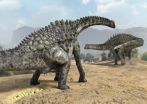(Press-News.org) Americans work longer hours, take fewer vacation days, and retire later than employees in other industrialized countries around the globe. With such demanding careers, it's no surprise that many experience job burnout — physical, cognitive, and emotional exhaustion that results from stress at work. Researchers have found that burnout is also associated with obesity, insomnia, and anxiety.
Now Dr. Sharon Toker of Tel Aviv University's Faculty of Management and her fellow researchers — Profs. Samuel Melamed, Shlomo Berliner, David Zeltser and Itzhak Shpira of TAU's Sackler Faculty of Medicine — have found a link between job burnout and coronary heart disease (CHD), the buildup of plaque in the coronary arteries that leads to angina or heart attacks.
Those who were identified as being in the top 20 percent of the burnout scale were found to have a 79 percent increased risk of coronary disease, the researchers reported in the journal Psychosomatic Medicine. Calling the results "alarming," Dr. Toker says that these findings were more extreme than the researchers had expected — and make burnout a stronger predictor of CHD than many other classical risk factors, including smoking, blood lipid levels, and physical activity.
Taking a toll on the heart
Some of the factors that contribute to burnout are common experiences in the workplace, including high stress, heavy workload, a lack of control over job situations, a lack of emotional support, and long work hours. This leads to physical wear and tear, which will eventually weaken the body.
Knowing that burnout has been associated with other cardiovascular risk factors, such as heightened amounts of cholesterol or fat in the bloodstream, the researchers hypothesized that it could also be a risk factor for coronary heart disease. Over the course of the study, a total of 8,838 apparently healthy employed men and women between the ages of 19 and 67 who presented for routine health examinations were followed for an average of 3.4 years. Each participant was measured for burnout levels and examined for signs of CHD. The researchers controlled for typical risk factors for the disease, such as sex, age, family history of heart disease, and smoking.
During the follow-up period, 93 new cases of CHD were identified. Burnout was associated with a 40% increased risk of developing CHD. But the 20% of participants with the highest burnout scores had a 79% increased risk. Dr. Toker predicts that with a more extended follow-up period, the results would be even more dramatic.
Avoiding long-term damage
These results are valuable for preventative medicine, says Dr. Toker. Healthcare providers who know that their patients are experiencing burnout can closely monitor for signs of coronary heart disease as well.
Once burnout begins to develop, it sparks a downwards spiral and ultimately becomes a chronic condition, she warns. Employers need to prioritize prevention by promoting healthy and supportive work environments and keeping watch for early warning signs of the condition. Simple diagnostic questionnaires that identify burnout are already available online. Workers can contribute to prevention by making healthy lifestyle choices, such as exercising more regularly, getting seven to eight hours sleep per night, and seeking psychological therapy if required.
INFORMATION:
American Friends of Tel Aviv University (http://www.aftau.org) supports Israel's leading, most comprehensive and most sought-after center of higher learning. Independently ranked 94th among the world's top universities for the impact of its research, TAU's innovations and discoveries are cited more often by the global scientific community than all but 10 other universities.
Internationally recognized for the scope and groundbreaking nature of its research and scholarship, Tel Aviv University consistently produces work with profound implications for the future.
Job burnout can severely compromise heart health
Top 20 percent of burnt-out employees have a dramatically increased risk of heart disease, Tel Aviv University researcher finds
2013-03-12
ELSE PRESS RELEASES FROM THIS DATE:
Ultra-high-speed optical communications link sets new power efficiency record
2013-03-12
Ultrafast supercomputers that operate at speeds 100 times faster than current systems are now one step closer to reality. A team of IBM researchers working on a U.S. Defense Advanced Research Projects Agency (DARPA)-funded program have found a way to transmit massive amounts of data with unprecedentedly low power consumption.
The team will describe their prototype optical link, which shatters the previous power efficiency record by half at the Optical Fiber Communication Conference and Exposition/National Fiber Optic Engineers Conference (OFC/NFOEC) in Anaheim, Calif. ...
New automated process simplifies alignment and splicing of multicore optical fibers
2013-03-12
New multicore optical fibers have many times the signal-carrying capacity of traditional single-core fibers, but their use in telecommunications has been severely restricted because of the challenge in splicing them together-- picture trying to match up and connect two separate boxes of spaghetti so that all of the noodles in each box are perfectly aligned. Now, a new splicing technique offers an automated way to do just that, with minimal losses in signal quality across the spliced sections. The method will be described at the Optical Fiber Communication Conference and ...
Penn study: Financial incentives affect prostate cancer treatment patterns
2013-03-12
Philadelphia - According to a new study by researchers at the Perelman School of Medicine at the University of Pennsylvania, prostate cancer patients of urologists who own expensive radiation equipment are more likely to receive radiation treatment in lieu of surgery than patients treated by urologists without an ownership stake in the equipment. The study, now available online in the Journal of Urology, found that integrated prostate cancer centers (IPCCs), where urology and radiation oncology practices are combined, use expensive radiation-based treatments at higher rates ...
Mystery of 'zombie worm' development unveiled
2013-03-12
How do bone-eating worms reproduce? A new study by Norio Miyamoto and colleagues from the Japan Agency for Marine-Earth Science and Technology sheds light on this question through a detailed observation of the postembryonic development and sexual maturation of Osedax worms, also known as "zombie worms." These worms typically inhabit vertebrate bones on the seafloor. The study is published online in Springer's journal Naturwissenschaften - The Science of Nature.
Osedax is Latin for "bone-devourer," which refers to how the worms bore into the bones of whale carcasses to ...
Neural 'synchrony' may be key to understanding how the human brain perceives
2013-03-12
Despite many remarkable discoveries in the field of neuroscience during the past several decades, researchers have not been able to fully crack the brain's "neural code." The neural code details how the brain's roughly 100 billion neurons turn raw sensory inputs into information we can use to see, hear and feel things in our environment.
In a perspective article published in the journal Nature Neuroscience on Feb. 25, 2013, biomedical engineering professor Garrett Stanley detailed research progress toward "reading and writing the neural code." This encompasses the ability ...
4 dinosaur egg species identified in Lleida
2013-03-12
A study headed by the Miquel Crusafont Catalan Palaeontology Institute has for the first time documented detailed records of dinosaur egg fossils in the Coll de Nargó archaeological site in Lleida, Spain. Up until now, only one type of dinosaur egg had been documented in the region.
The archaeological site in Coll de Nargó containing dinosaur eggs lies some 8 kilometres to the west of the town that bears the same name in the province of Lleida. This region is home to different types of geological formations, including the Areniscas de Arén Formation and the Tremp Formation, ...
Does expressing anger on online rant-sites make you feel better or worse?
2013-03-12
New Rochelle, NY, March 12, 2013—Little is known about the value and emotional consequences of expressing anger on the Internet. Rant-sites provide an outlet for anonymous, angry outbursts. How people feel after reading and writing rants and the effects of this behavior is explored in an article in Cyberpsychology, Behavior, and Social Networking, (http://www.liebertpub.com/cyber) a peer-reviewed journal from Mary Ann Liebert, Inc., publishers (http://www.liebertpub.com). The article is available online on the Cyberpsychology, Behavior, and Social Networking (http://www.liebertpub.com/cyber) ...
Young pigs prefer traditional soybean diet
2013-03-12
Des Moines, IA – Pigs aren't known for being picky, but new research shows they avoid bitter tastes when they can.
In a new study of nursery pig diets, researchers from the University of Alberta offered pigs different amounts of soybean meal, napus canola meal and juncea canola meal. They found that pigs ate more soybean meal when given a choice.
Napus canola meal and juncea canola meal come from rapeseed and mustard greens, respectively. Canola meals are less expensive than soybean meal. If producers can replace soybean meal in swine diets, they could produce pork ...
Updated 'stereo EEG' workflow simplifies planning of epilepsy surgery
2013-03-12
Philadelphia, Pa. (March 12, 2013) – For patients with "drug-resistant" epilepsy requiring surgery, an updated stereoelectroencephalography (SEEG) technique provides a more efficient process for obtaining critical data for surgical planning, according to a study in the March issue of Neurosurgery, official journal of the Congress of Neurological Surgeons. The journal is published by Lippincott Williams & Wilkins, a part of Wolters Kluwer Health.
"SEEG is a safe and accurate procedure for invasive assessment of the epileptogenic zone," according to the new report by Dr. ...
Some bacteria may protect against disease caused by stomach infection
2013-03-12
Half of the world's human population is infected with the stomach bacteria called Helicobacter pylori, yet it causes disease in only about 10 percent of those infected. Other bacteria living in the stomach may be a key factor in whether or not H. pylori causes disease, according to a new study led by scientists at the University of California, Santa Cruz.
"People tend to think of the stomach as a relatively sterile environment, but it's actually populated with microbes," said Karen Ottemann, professor and chair of microbiology and environmental toxicology at UC Santa ...
LAST 30 PRESS RELEASES:
A new way to map how cells choose their fate
Numbers in our sights affect how we perceive space
SIMJ announces global collaborative book project in commemoration of its 75th anniversary
Air pollution exposure and birth weight
Obstructive sleep apnea risk and mental health conditions among older adults
How talking slows eye movements behind the wheel
The Ceramic Society of Japan’s Oxoate Ceramics Research Association launches new international book project
Heart-brain connection: international study reveals the role of the vagus nerve in keeping the heart young
Researchers identify Rb1 as a predictive biomarker for a new therapeutic strategy in some breast cancers
Survey reveals ethical gaps slowing AI adoption in pediatric surgery
Stimulant ADHD medications work differently than thought
AI overestimates how smart people are, according to HSE economists
HSE researchers create genome-wide map of quadruplexes
Scientists boost cell "powerhouses" to burn more calories
Automatic label checking: The missing step in making reliable medical AI
Low daily alcohol intake linked to 50% heightened mouth cancer risk in India
American Meteorological Society announces Rick Spinrad as 2026 President-Elect
Biomass-based carbon capture spotlighted in newly released global climate webinar recording
Illuminating invisible nano pollutants: advanced bioimaging tracks the full journey of emerging nanoscale contaminants in living systems
How does age affect recovery from spinal cord injury?
Novel AI tool offers prognosis for patients with head and neck cancer
Fathers’ microplastic exposure tied to their children’s metabolic problems
Research validates laboratory model for studying high-grade serous ovarian cancer
SIR 2026 delivers transformative breakthroughs in minimally invasive medicine to improve patient care
Stem Cell Reports most downloaded papers of 2025 highlight the breadth and impact of stem cell research
Oxford-led study estimates NHS spends around 3% of its primary and secondary care budget on the health impacts of heat and cold in England
A researcher’s long quest leads to a smart composite breakthrough
Urban wild bees act as “microbial sensors” of city health.
New study finds where you live affects recovery after a hip fracture
Forecasting the impact of fully automated vehicle adoption on US road traffic injuries
[Press-News.org] Job burnout can severely compromise heart healthTop 20 percent of burnt-out employees have a dramatically increased risk of heart disease, Tel Aviv University researcher finds






